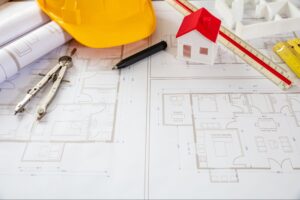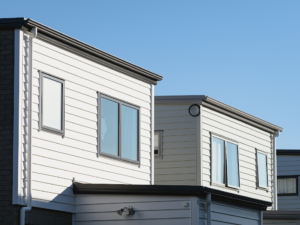Flooring trends in 2024 are setting new benchmarks in home design. With the evolution of technology and an increased focus on sustainability, how we choose and install flooring has dramatically transformed. Homeowners now look for stylish, environmentally friendly, and easy-to-maintain solutions. These trends offer innovative options that promise to enhance living spaces’ beauty and functionality. The following sections provide a comprehensive look at what to expect in flooring this year, ensuring you stay ahead in creating a stylish and sustainable home.
Sustainable Flooring Options
Eco-friendly flooring options are gaining traction among homeowners. Bamboo flooring stands out due to its rapid renewability and stylish appeal. It offers versatility, durability, and an attractive appearance that can complement various home styles. Bamboo is also a sustainable choice, contributing positively to the environment. Reclaimed wood, with its weathered look, provides a unique character. It involves sourcing wood from old buildings and repurposing it for new floors. This process reduces waste and promotes recycling, making it an excellent choice for eco-conscious homeowners.
Luxury Vinyl Plank (LVP) and Tile (LVT)
Technological advancements have revolutionized luxury vinyl plank (LVP) and tile (LVT) flooring. These materials now mimic natural surfaces with impressive realism. The enhanced texture and design make them preferred over traditional hardwood or stone. LVP and LVT are known for their durability and ease of maintenance. They withstand heavy foot traffic, making them suitable for busy households. Additionally, cleaning is straightforward, requiring minimal effort to keep them looking pristine.
Waterproof and Water-Resistant Flooring
Many homeowners need water-resistant flooring. Waterproof laminate has significantly improved, providing a practical solution for moisture-prone areas. It’s ideal for kitchens, bathrooms, and basements, offering the look of wood without the risk of damage.
Cork flooring is another excellent choice for water resistance. Its natural properties repel moisture, making it durable and comfortable. Cork also provides thermal insulation, adding a warm and cozy feel to any room while being environmentally friendly.
Bold Patterns and Colors
Flooring designs are shifting towards bold patterns and colors. Geometric patterns are trendy, adding a modern touch to any space. They come in various designs, allowing homeowners to customize their floors to suit their style. These patterns can make a significant visual impact, enhancing the overall décor. Statement colors are making a splash in 2024. Bold hues like deep blues, rich greens, and vibrant reds create focal points. Balancing these colors with the rest of the interior design can yield stunning results, making a powerful style statement.
Smart Flooring Technology
The integration of technology into flooring is on the rise. Heated flooring systems are becoming more common, offering comfort and energy efficiency. These systems are especially beneficial in colder climates, providing a warm and cozy environment. Sensor-embedded flooring is an innovative trend featuring sensors that can detect movement and monitor home security. This technology adds a layer of convenience and safety, representing the future of smart homes. As technology evolves, innovative flooring will likely become more prevalent.
Natural Stone Flooring
Natural stone flooring remains timeless and elegant. With its luxurious appeal, marble flooring is perfect for creating sophisticated spaces. It’s best used in foyers and bathrooms where its beauty can be showcased. Proper maintenance ensures its longevity, making it a worthwhile investment. Slate flooring offers a rugged and durable option. Its natural texture and color variations add a unique charm to any room. Slate is suitable for both indoor and outdoor use, providing versatility. Regular care and maintenance can keep it looking its best for years.
Comparative Analysis
Understanding the differences between flooring materials is crucial for making an informed decision. Each type of flooring comes with unique characteristics that can significantly impact your home’s aesthetics, durability, and maintenance needs. By comparing these aspects, homeowners can better determine which flooring best suits their lifestyle and preferences.
Durability
Luxury Vinyl Plank (LVP) is highly durable, resisting scratches, dents, and moisture, making it ideal for high-traffic areas. Natural stone is renowned for its exceptional durability, though softer stones like marble can be prone to scratches and stains. Bamboo flooring offers good durability but can be more susceptible to scratches and dents than rigid materials. Reclaimed wood is highly durable and long-lasting, with its unique aging process often adding to its appeal over time.
Maintenance
LVP requires minimal maintenance, only regular sweeping and occasional mopping to keep it clean. Natural stone floors, including annual sealing, need more upkeep to protect against stains and damage. Bamboo flooring should be swept and mopped regularly, and it may require refinishing periodically to maintain its appearance. Reclaimed wood floors need careful maintenance, including regular cleaning and refinishing, to preserve their unique character and beauty.
Aesthetic Appeal
LVP offers a wide range of styles and finishes, closely mimicking the look of natural wood and stone, making it a versatile choice for various interior designs. Natural stone provides a timeless, luxurious look with unique variations and textures that add elegance to any space. Bamboo flooring has a sleek, modern appearance with a natural feel, available in various shades and finishes. Reclaimed wood floors offer a rustic charm with rich history and character, each piece telling its unique story.
Cost
LVP is moderately priced, offering the look of wood or stone at a fraction of the cost, making it a budget-friendly option. Natural stone is on the higher end of the cost spectrum, with prices varying significantly based on the type of stone. Bamboo flooring is generally affordable, although the cost can vary depending on the quality and finish. Reclaimed wood is often more expensive due to the labor-intensive process of sourcing and preparing the material.
Comparing these aspects can help homeowners make more informed choices about their flooring. By evaluating these characteristics, you can select the flooring that best meets your needs and enhances your home’s overall look and functionality.
Cost Analysis
Understanding the cost implications of different flooring options helps make a well-informed decision that aligns with financial constraints and expectations. Here’s a detailed look at the costs of popular flooring materials, including installation and maintenance.
Affordability of Luxury Vinyl Plank (LVP)
LVP typically costs between $2 to $7 per square foot, making it an affordable option for those looking for the aesthetic appeal of wood or stone without the high price tag. Installation costs range from $1 to $5 per square foot, depending on the project’s complexity and regional labor rates. Maintenance is relatively inexpensive, requiring only regular cleaning supplies for routine upkeep. That makes LVP cost-effective for budget-conscious homeowners who still desire a high-end look.
Investment in Natural Stone
Natural stone flooring, such as marble or granite, is on the higher end, with material prices ranging from $5 to $50+ per square foot. Installation can be labor-intensive, costing between $7 to $15 per square foot due to the need for precise placement and specialized skills. Maintenance costs are moderate, involving periodic sealing and professional cleaning to maintain the stone’s appearance and durability. Despite the higher initial and ongoing costs, natural stone provides a luxurious and timeless appeal that can add significant value to a home.
Economical Choice of Bamboo
Bamboo flooring is generally affordable, ranging from $3 to $8 per square foot, depending on the quality and finish. Installation costs are typically between $3 to $7 per square foot, making it a budget-friendly option for many homeowners. Maintenance costs are low to moderate, with occasional refinishing required to maintain its appearance. Bamboo’s affordability and eco-friendly nature make it an attractive choice for those looking to balance cost and sustainability.
Premium Appeal of Reclaimed Wood
Reclaimed wood flooring is often more expensive due to the labor-intensive process of sourcing and preparing the material, with costs ranging from $5 to $20 per square foot. Installation can add another $5 to $12 per square foot, reflecting the specialized labor required to install and finish reclaimed wood properly. Maintenance costs are moderate, including regular cleaning and potential refinishing to preserve its unique character. Reclaimed wood’s distinctive, rustic charm and sustainability often justify the higher price.
Considering initial costs and long-term maintenance expenses is essential in making an informed decision. This analysis helps ensure that the chosen flooring fits within budget constraints and meets aesthetic and functional needs.
Maintenance Tips
Proper maintenance is essential for extending the life and enhancing the appearance of your flooring. Different flooring materials require specific care routines to keep them looking their best. Here are some best practices for maintaining various types of flooring.
Care for Luxury Vinyl Plank (LVP)
LVP has relatively low maintenance. Regular cleaning involves sweeping or vacuuming to remove dirt and debris, then mopping with a damp cloth and a mild cleaner as needed. Preventative measures can help prevent scratches. Spills should be cleaned immediately to prevent staining, ensuring the floor remains pristine.
Upkeep for Natural Stone
Natural stone floors require more upkeep than other materials. Sealing the stone helps protect it from stains and moisture damage. Regular sweeping or vacuuming is essential to remove dirt and grit that can scratch the surface. Use pH-neutral cleaners specifically designed for stone to maintain natural beauty, and promptly address stains with appropriate cleaning solutions to prevent permanent damage.
Preservation of Bamboo Flooring
Bamboo flooring needs regular sweeping or vacuuming to remove dust and debris. Cleaning with a damp mop and a mild wood floor cleaner helps maintain its appearance. Preventative measures can reduce the risk of scratches and dents. Minor scratches can be repaired with wood filler, while deeper damage may require occasional refinishing to restore the floor’s original look.
Maintenance of Reclaimed Wood
Reclaimed wood floors require careful maintenance to preserve their unique character. Regular sweeping or vacuuming helps prevent grit from scratching the surface. Mopping with a damp cloth and a gentle cleaner is recommended for deeper cleaning. Maintaining consistent humidity levels in the home can prevent warping, and periodic refinishing can restore the wood’s appearance and protect it from further wear.
Following these maintenance tips can significantly extend the lifespan of your flooring. Regular care and preventative measures help keep floors looking their best, preserving their functionality and aesthetic appeal. By investing time in proper maintenance, homeowners can enjoy beautiful, long-lasting floors for years.
Visit our Build All Construction blog for more on 2024 flooring trends. Get expert insights and transform your home with the latest styles and materials during your next remodel.







